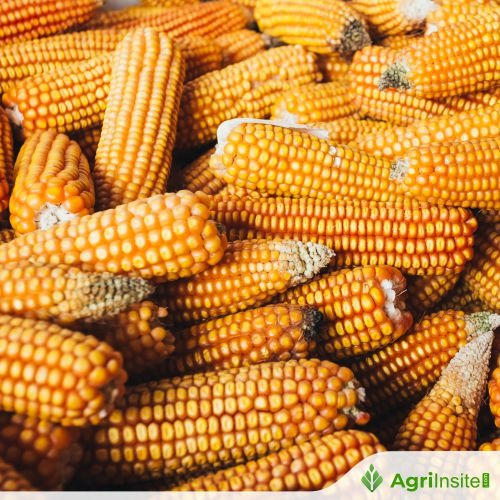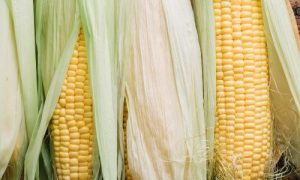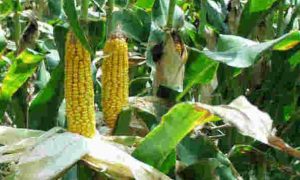Three parties now bidding for Rafhan Maize

Three top conglomerates—Nishat, Sapphire Fibres, and the Cherat-Atlas duo—are locked in a high-stakes race to acquire Ingredion’s 71% stake in Rafhan Maize, Pakistan’s starch industry leader. Worth over Rs58 billion, the deal promises control of a debt-free, export-oriented asset with deep agri roots. Beyond price, the outcome could reshape Pakistan’s industrial and investment landscape.
The fight for Ingredion’s 71% holding in Rafhan Maize Products Company Ltd. (RMPL) has turned into a full-blown bidding war. In the space of eight days three very different suitors have filed “public announcements of intention” with the Pakistan Stock Exchange (PSX):
- Nishat Hotels & Properties Ltd. (NHPL), part of billionaire Mian Muhammad Mansha’s Nishat Group, acting through Next Capital as manager to the offer
- the previously disclosed Cherat Cement–Shirazi Investments consortium that pairs the Ghulam Faruque and Atlas groups;
- Sapphire Fibres Ltd. (SFL), the flagship textile company of Lahore’s Sapphire Group.
Each notice seeks regulatory leave to acquire up to 6.99 million shares, or 75.69 percent of Rafhan’s paid-up capital, meaning any two could, in theory, buy out Ingredion and the public float in one swoop. A formal share-purchase agreement (SPA) and a mandatory tender offer will follow once due diligence wraps up and the Competition Commission of Pakistan (CCP) issues clearances.
Rafhan’s thinly traded stock closed at Rs8,911 on 13 May 2025 after drifting between Rs8,500 and Rs9,700 over the past month. Using the 28-day volume-weighted average price of Rs8,962 quoted in the Cherat-Atlas filing, a full 75.69 percent block is worth Rs62.7 billion ($223 million). Ingredion’s core holding of 71 percent—essentially the shares it wants to exit—would fetch just over Rs58 billion before negotiations on a control premium.
Rafhan is debt-free and sat on net cash of roughly Rs8 billion at December 2024, so on an enterprise basis the equity cheques translate into 4.5–4.8x trailing EBITDA—a bargain relative to regional specialty-ingredients peers that change hands at 8–12x.
Founded in Faisalabad in 1953 by CPC International, Rafhan pioneered wet-milling in Pakistan and now grinds 400,000 t of corn a year into industrial starches, liquid glucose, dextrose, dextrins and gluten meals sold to the food, textile, paper and pharma sectors. Although it is strictly a B2B ingredients maker, the Rafhan name conjures images of custard powder, cornflour and jelly mixes—retail brands created by CPC in the 1970s and sold to Unilever in 1998. The industrial company still licenses the trademark, so every tin of Rafhan Custard keeps the goodwill alive.
Rafhan posted Rs69.9 billion revenue and Rs7.5 billion net profit in 2024, keeping its decade-long double-digit margin run alive; Q1-2025 earnings were another Rs1.96 billion. The firm pays Pakistan’s most reliable dividend—1,000 percent a year in cash—and sports a 21 percent gross margin despite agricultural price swings.
Nishat’s bid
The Nishat Group began as a textile mill in 1951 and under chairman Mian Muhammad Mansha morphed into Pakistan’s largest private conglomerate with assets across textiles, banking (MCB Bank), cement (DG Khan), autos (Hyundai-Nishat), power, insurance, and hospitality.
Nishat Hotels & Properties Ltd. owns two five-star hotels in Lahore, the Emporium Mall and real-estate projects in London and Islamabad. Its PSX notice seeks the full 75.69 percent stake in Rafhan. The strategic logic might include three potential reasons.
The first is food-service integration: Nishat’s malls, banquet halls and planned quick-service restaurant franchises buy tonnes of starches and sweeteners. Owning Rafhan secures supply and can spawn new retail SKUs under a brand Pakistan already trusts.
The second is as a diversification of its currency hedge. Nishat Group exporters earn dollars via textiles; Rafhan exports starch syrups to the Middle East, which could be a way to diversify export dollar inflows.
Finally, there is the simple case of deploying balance-sheet firepower: MCB Bank’s dividend stream gives Nishat ample debt capacity — useful if a bidding war inflates the price.
Sapphire Fibres’ bid
Sapphire Fibres Ltd. (PSX: SFL) was set up in 1979 and is today one of Pakistan’s five largest textile exporters as well as an emerging energy investor with over 230 MW of wind and gas-based power assets. In April it closed the purchase of half of the UCH-I and UCH-II gas plants, signalling hunger for cash-generating diversification.
Why would it want to buy Rafhan? There is the supply-chain adjacency. Textile sizing uses industrial starch; Sapphire already imports some of those inputs. Backward integration could shave costs at its Sheikhupura and Lahore mills. Then there are the export synergies. The group’s global yarn customer network overlaps with food conglomerates that buy Rafhan’s glucose and maltodextrin in the Gulf and Africa.
Finally, there are compulsions of trying to smooth out the conglomerate cashflows. Textiles’ earnings swing with cotton and power tariffs; Rafhan’s consumer-linked demand and dividend habit smooth the ride.
The Cherat Cement–Atlas (Shirazi) joint bid
Started in 1981 and expanded to 4.5 million t p.a. capacity by 2019, Cherat is a top-six cement maker with a 7% national market share and a reputation for frugal, energy-efficient kilns in Nowshera.
Shirazi Investments (Pvt.) Ltd. is the holding company behind the Atlas Group, whose units include Atlas Honda (motorcycles, 70% share), Atlas Battery, Atlas Insurance and 275 MW of power plants. Founded in 1962 by the late Yusuf H. Shirazi, Atlas prides itself on long-term JVs with Japanese partners and on maintaining an investment-grade balance sheet.
Their logic might include diversification away from cement cyclicality and two-stroke electrification pressures. There is also the attraction of dollar revenues: Rafhan’s exports and foreign customer base offer a hedge against rupee volatility — vital for groups that import coal (Cherat) or CKD kits (Atlas Honda). Finally, there is the infrastructure overlap. Cherat’s rail-and-road logistics for clinker exports can back-haul corn and finished ingredients, trimming freight costs.
Price tension
With three credible groups at the table and each notice allowing them to buy the entire 75.69 percent, Ingredion is poised to extract a premium. A 10 percent bump over volume-weighted average price (VWAP) — taking the per-share tag toward Rs9,900 — is plausible if bids escalate, which would lift equity value for the Ingredion block to Rs64–69 billion.
There also appear to be relatively few regulatory hurdles. A review by the Competition Commission of Pakistan (CCP) should be straightforward: none of the bidders makes starch, and the deal will not lessen competition in any existing market.
There may be some difficulties paying Ingredion, given the fact that the Chicago-headquartered company is likely to want to get paid in US dollars, and the State Bank of Pakistan may make it difficult to remit quite so much in dollars out of the country.
Finally, there are the public-interest optics. Rafhan is Punjab’s largest corn buyer from smallholder farmers; policymakers may favour a buyer promising capex and farmer extension services.
There are also possible wild cards. Middle East-based ingredient giants may yet decide to throw their hats into the ring. And there is the interesting, if somewhat unlikely possibility of Unilever Pakistan, the owner of the Rafhan Custard brand, seeking to reunify the industrial and retail franchises. The consumer-goods giant has not signalled interest.
Why this sale matters
Ingredion’s exit will end the longest continuous foreign manufacturing investment in Pakistan (73 years) and transfer a strategic agri-industrial asset to local owners. Whoever prevails will control a 50-hectare wet-milling complex in Faisalabad, satellite plants at Jaranwala and Kotri, and an R&D centre in Karachi; annual procurement of 500,000 tons of Punjab corn by 2027 under expansion plans, impacting thousands of farmers, and a platform to branch into plant-based proteins, glucose-fructose syrups and biodegradable packaging resins that feed consumer megatrends.
For investors, the tussle signals a maturing of Pakistan’s capital markets: three home-grown conglomerates — textile, cement, diversified — are ready to write $220-plus-million cheques without foreign partners. For policymakers, it is a litmus test of how smoothly large-ticket M&A can clear regulatory hoops in a frontier economy hungry for investment.
With Nishat, Sapphire and the Cherat-Atlas joint venture now circling Rafhan Maize, the Chicago-based seller holds the stronger hand — but only until one bidder blinks. All three see in Pakistan’s starch champion a chance to derisk their existing portfolios, lock in dollar earnings and tap the consumer magic of a 70-year-old pantry brand.
Over the next few weeks data rooms will buzz, bankers will model synergies, and corn farmers from Faisalabad to Jaranwala will watch to see which corporate flag is hoisted over the country’s most prized wet-mill. One thing is certain: rare is the Pakistani deal that aligns food, textiles, cement, motorcycles and hotels under a single asset — making this three-way battle one of the most keenly watched takeovers of 2025.
To Read more about Maize News continue reading Agriinsite.com
Source : Profit Pakistan Today
















